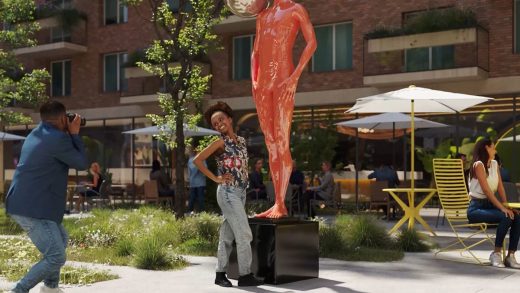The solution to the urban downtown doom loop is simpler than you think
In San Francisco’s Financial District, a coalition of city officials, designers, and business leaders hope an alleyway can be a bellwether for the resurgence of a struggling downtown.
Called the Landing at Leidesdorff, the recently redesigned passageway will feature removable street seating, murals recalling the area’s maritime history as a former wharf, and a village-like atmosphere in the center of downtown, complete with events and programming. Designed by SITELAB (whose office is a block away), this blip of urban activity is a small but important step in reactivating a neighborhood that’s 90% office building and facing serious existential issues.
Office-dense areas of downtown could use the help these days. Pandemic-era remote work shifts have left central business districts empty—after numerous Labor Day deadlines for return-to-office have passed, average office occupancy for major U.S. cities is still hovering around 50%, and McKinsey estimates suggest the value of office real estate has dropped by $800 billion among a handful of leading global cities. It’s putting significant strain on city tax collection and budgets, local retail and restaurants, and even public safety.
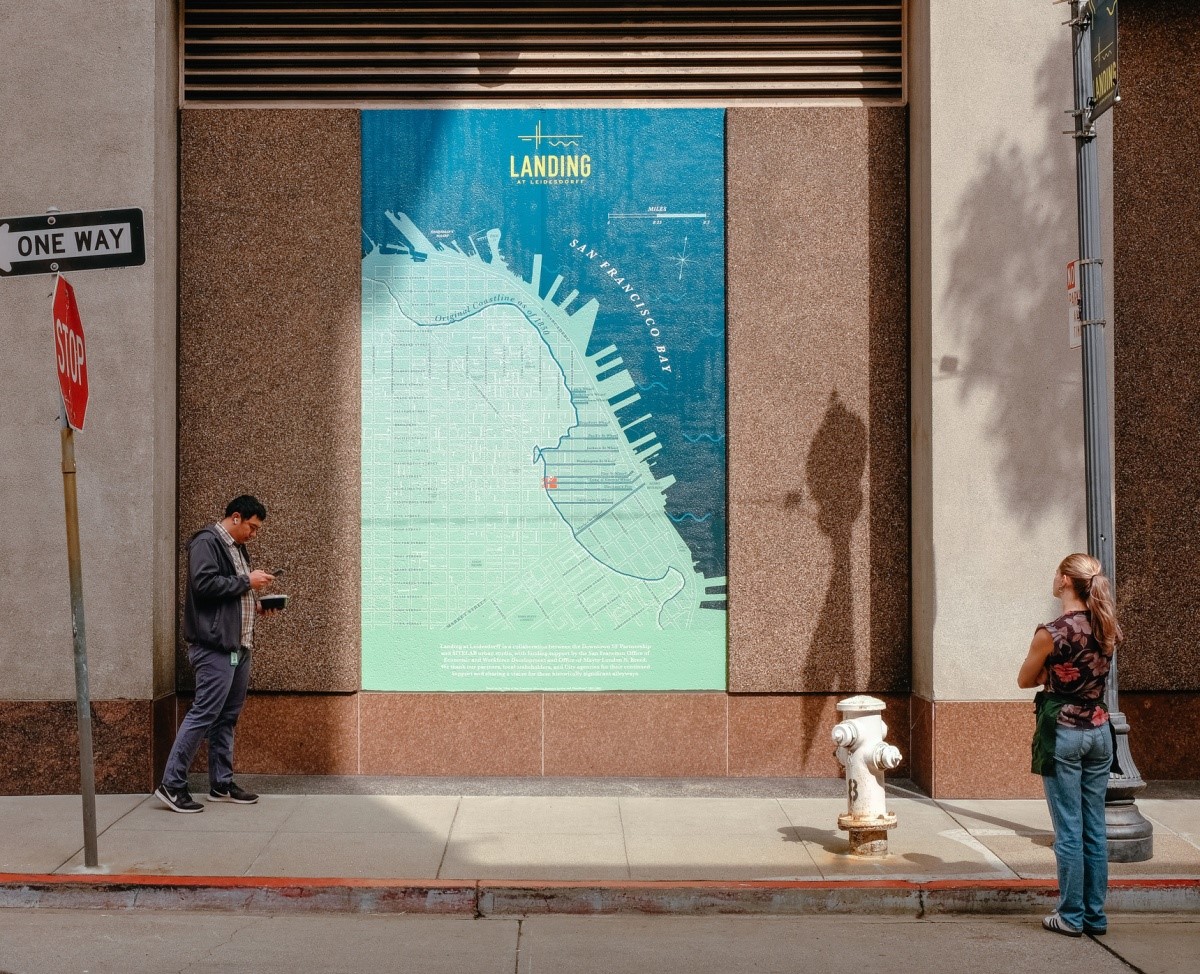
While SITELAB’s vision is ambitious, the rollout will be small-scale. Despite a year of work to make it happen, despite the wealth of historic architecture, support from the Mayor’s office and $385,000 in city investment, San Francisco will only pedestrianized a single alleyway as a pilot project (it will be car-free for 16 hours a day). That scale is indicative of a failure of city governments, in San Francisco and nationwide, to seize the pandemic-era opportunity to redesign downtown neighborhoods for the way people want to live.
“I agree it’s not enough,” says Laura Crescimano, a designer at SITELAB. “I would have loved this to be five alleyways to start. We need to do more, and we’re still in the moment of demonstrating value.”
Landing at Leidesdorff exemplifies frustration over the way visions for public space investment aren’t taking root, particularly at a time when struggling downtowns need a catalyst. The San Francisco alley concept somewhat mirrors another plan being proposed on the opposite coast, a network of greenways in Washington, D.C.’s Golden Triangle, an office district near the National Mall filled with second-tier, Class B office space.
Envisioned by Eran Chen, architect and founding principal of ODA, DC Greenways would slice into the ground floors of underutilized office buildings, creating more space for public passages linking this neighborhood to sites around the Capital. Owners would be given zoning permission to build additional rooftop spaces to make up the missing ground-level rent.
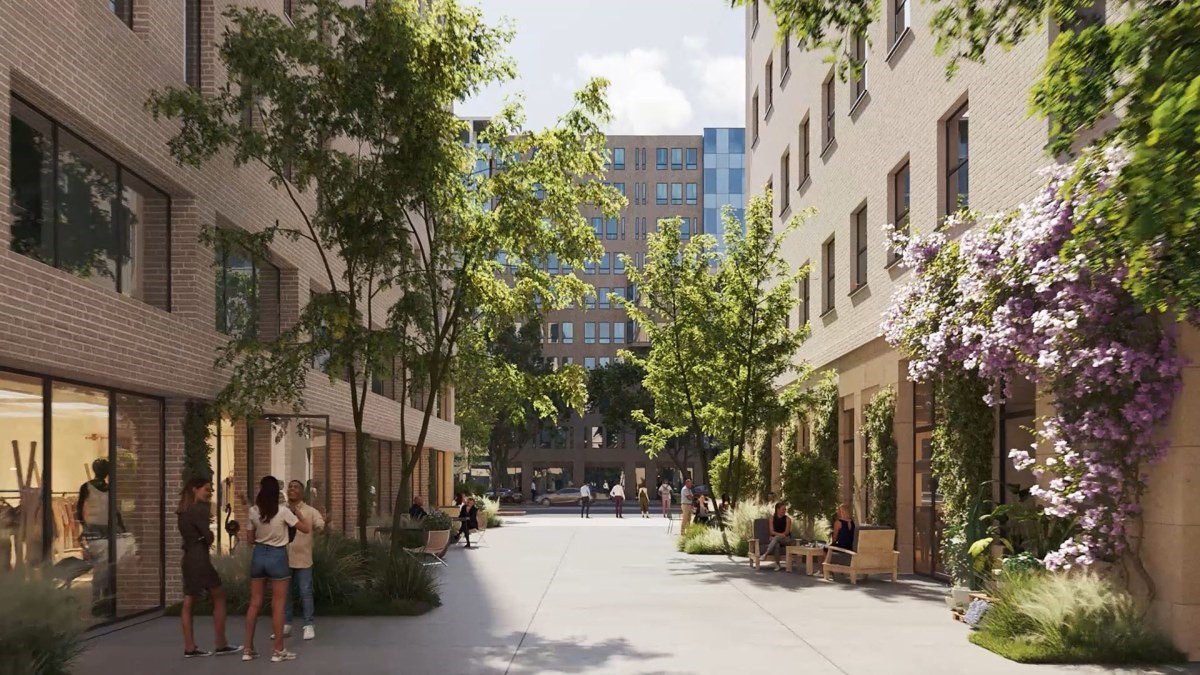
“I see it as a once-in-a-lifetime opportunity,” Chen says of this lattice of walkways threading together the neighborhood. “It’s a rare opportunity in modern cities to reconstruct or reimagine big portions of cities to adapt them to the needs of today.”
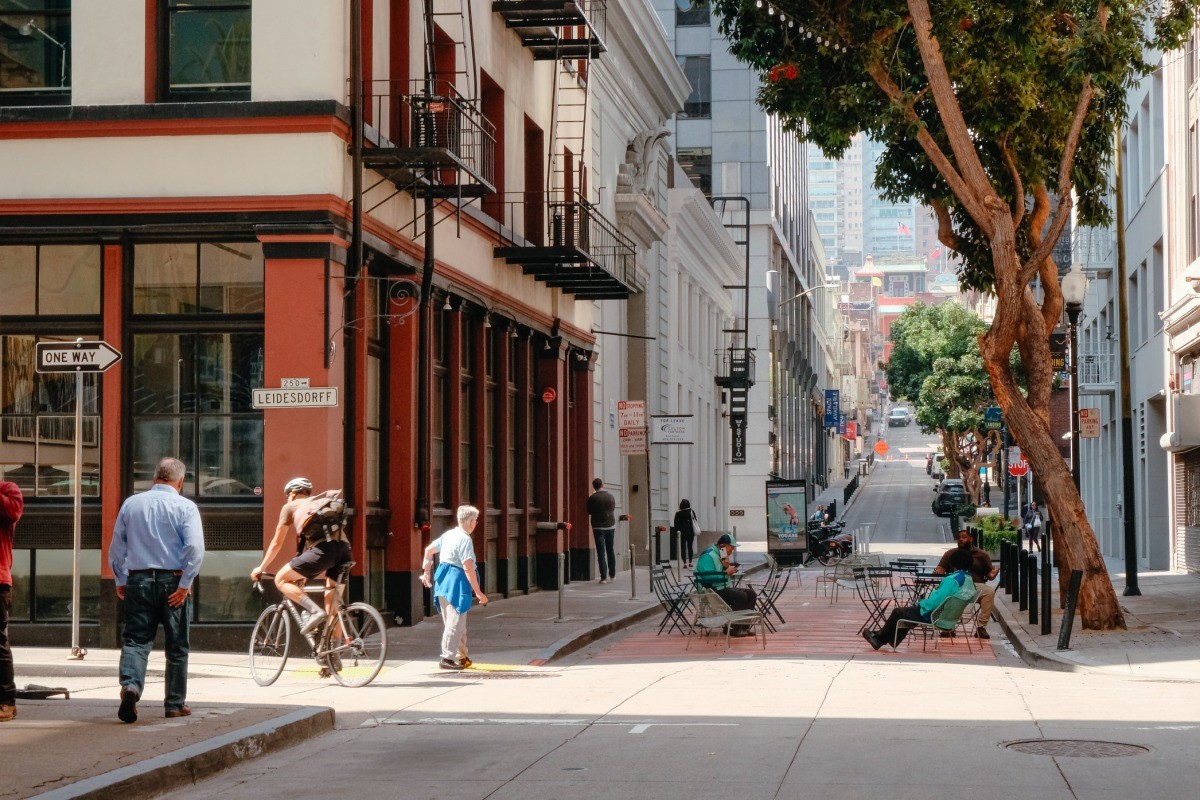
It’s not surprising that San Francisco and Washington, D.C., with office vacancy rates of 31.6% and 20.4%, respectively, would be the locations where these public placemaking ideas would be proposed. As company towns dominated by tech and government, they’re seeing significant challenges getting workers to return to offices, which in turn has harmed office values, cut tax revenues, and set off urban doom loop discussions.
Significant scholarship supports the value of more walkable public spaces. Research by Smart Growth America has found that what it calls walkable urban places are drivers of urban equity and economic activity: these areas comprise 1.2% of urban land in the U.S., yet account for 19.1% of all U.S. real GDP.
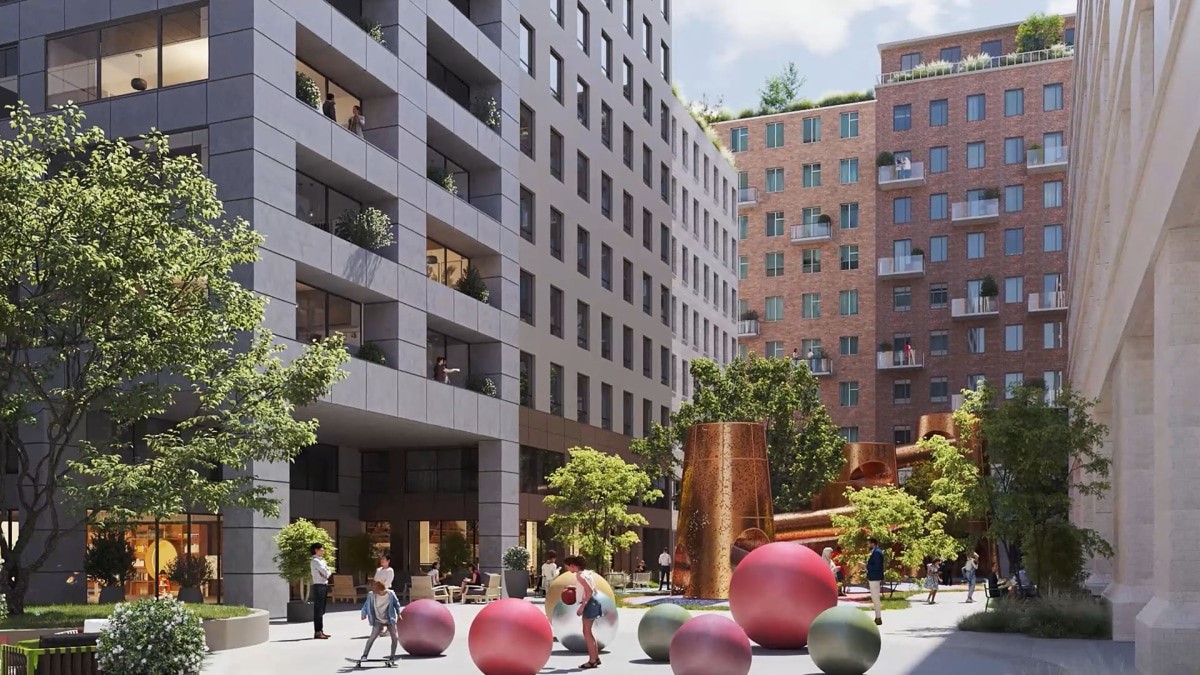
These proposals are also indicative of the challenges U.S. cities are facing at making these changes, especially amid larger uncertainties around cost and change. “This didn’t happen as quickly as we would have liked, but our hope is that this sparks interest in downtown,” says Sarah Dennis Phillips, executive director of the Office of Economic and Workforce Development, the San Francisco city agency that helped the Landing at Leidesdorff project take shape, and has a handful of other projects in the pipeline for the next year. “We are trying to do things so why wouldn’t we do this at a bigger scale? The very simple answer is funding.”
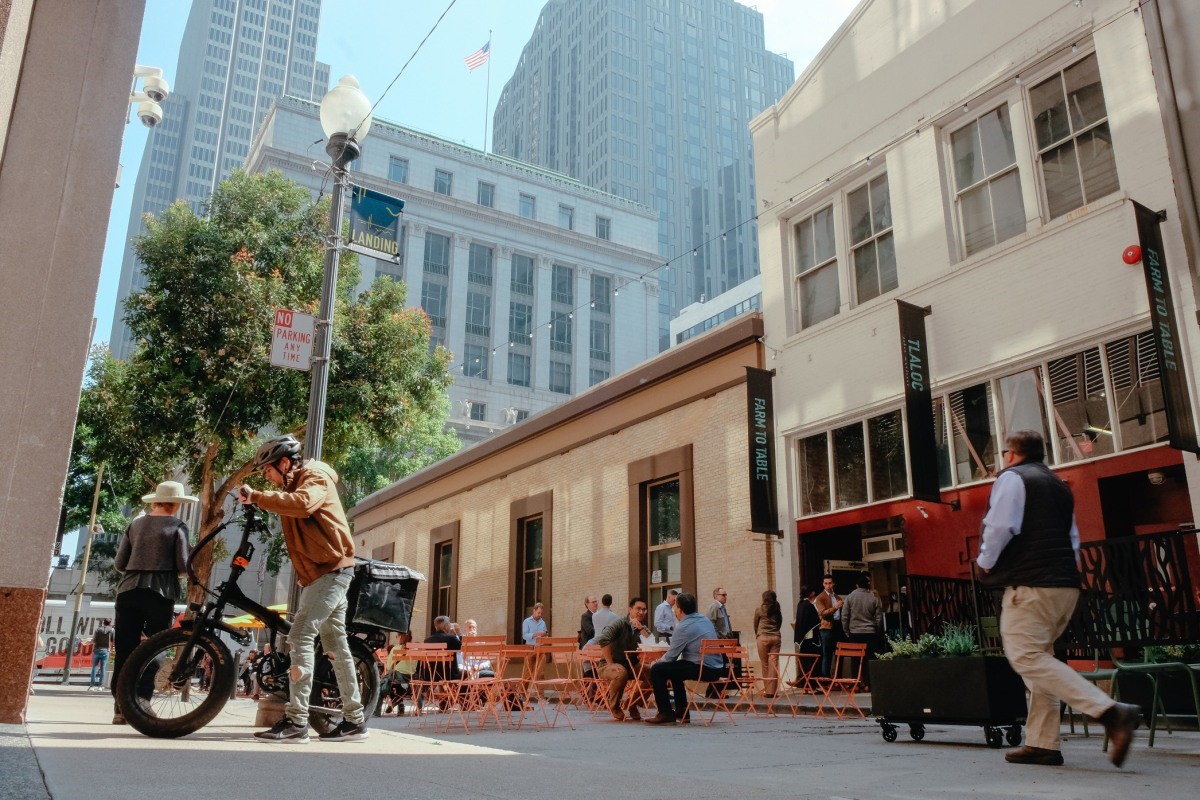
Experts agree that investing in public spaces and car-free transportation networks in desperate downtowns is the right idea. Tracy Loh, an urbanism expert at Brookings Institution who is focused on real estate, says the Greenway program is exactly what the city, and other U.S. cities, need. She uses a biological metaphor to explain: cells benefit from more surface area to exchange proteins and oxygen. Buildings benefit in the same way. More surface area for interactions, retail exchange, and cultural activities—like creating greenways for pedestrians and trade—benefit everyone by increasing foot traffic, visitors, and trade. Chicago and Seattle have been engaged in efforts to expand inclusive retail to set off just such a shift.
But as the San Francisco example shows, many barriers stand in the way. These include hidebound city agencies, as well as conservative real estate owners worried about change, and, Loh adds, anxious community groups who have seen the ’90s urban revitalization playbook bring about rising property values and displacement.
“There’s a lack of shared vision and coordination,” she adds. “In order for this to happen at scale, a lot of people need to be brought into the view that this is a good idea.”
Other cities are seeing similar struggles: The relatively small redevelopment of McGuinness Boulevard in Brooklyn, which would add protected bike lanes to a busy one-mile stretch of roads in the Greenpoint neighborhood, has stalled due to backlash from local businesses, pushback that is supported by Mayor Eric Adams.
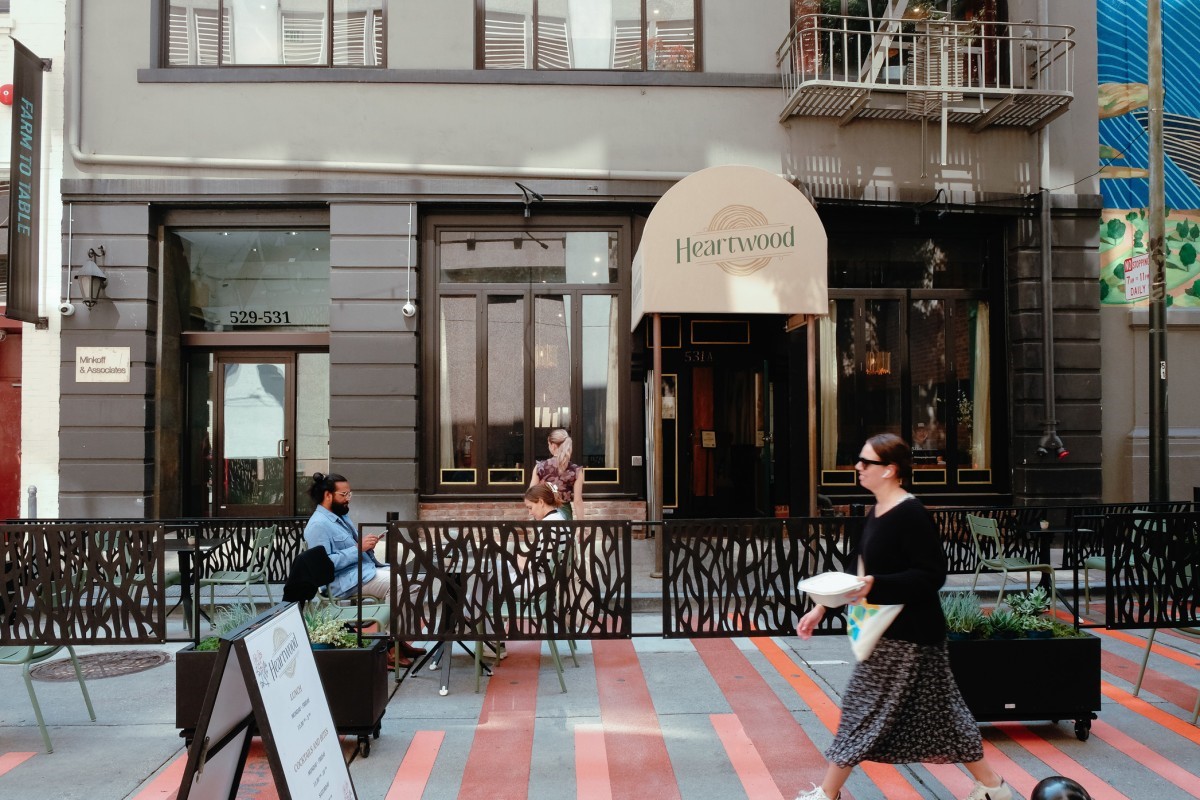
“System change is really tough,” says Claude Imbault, Deputy Director of Downtown SF Partnership, a 2.5-year-old Business Improvement District (BID) supporting a 43-square block neighborhood, and initiatives like the Landing project. Broadly speaking, BIDS have been evolving during the pandemic, acting more supportive of bike lanes and other pedestrian improvements, instead of decrying their supposed impact on retail activity. In the case of downtown San Francisco, Imbault noted, the city, which had until recently had an uncommonly low office vacancy rate (4% pre-pandemic), didn’t feel the pressure to invest in the public realm or advertise itself. Now, the area Imbault covers has roughly 150,000 square feet of vacant retail space.
But realizing change isn’t the same as making the investment, a challenge compounded by the continuing uncertainty around the state of the office market, which has a significant impact on city budgets. And getting BIDs to agree on something that’s more permanent is hard to do.
“Occam’s razor prevails,” says Michael Rodriguez, Director of Research for Smart Growth America, a non-profit focused on urban development. “The simplest explanation is that these things cost money. And from the commercial real estate perspective, retail on the ground floor may be the feature, but the office is what’s making money. So when these offices stop making money, it’s kind of hard to activate the retail.”
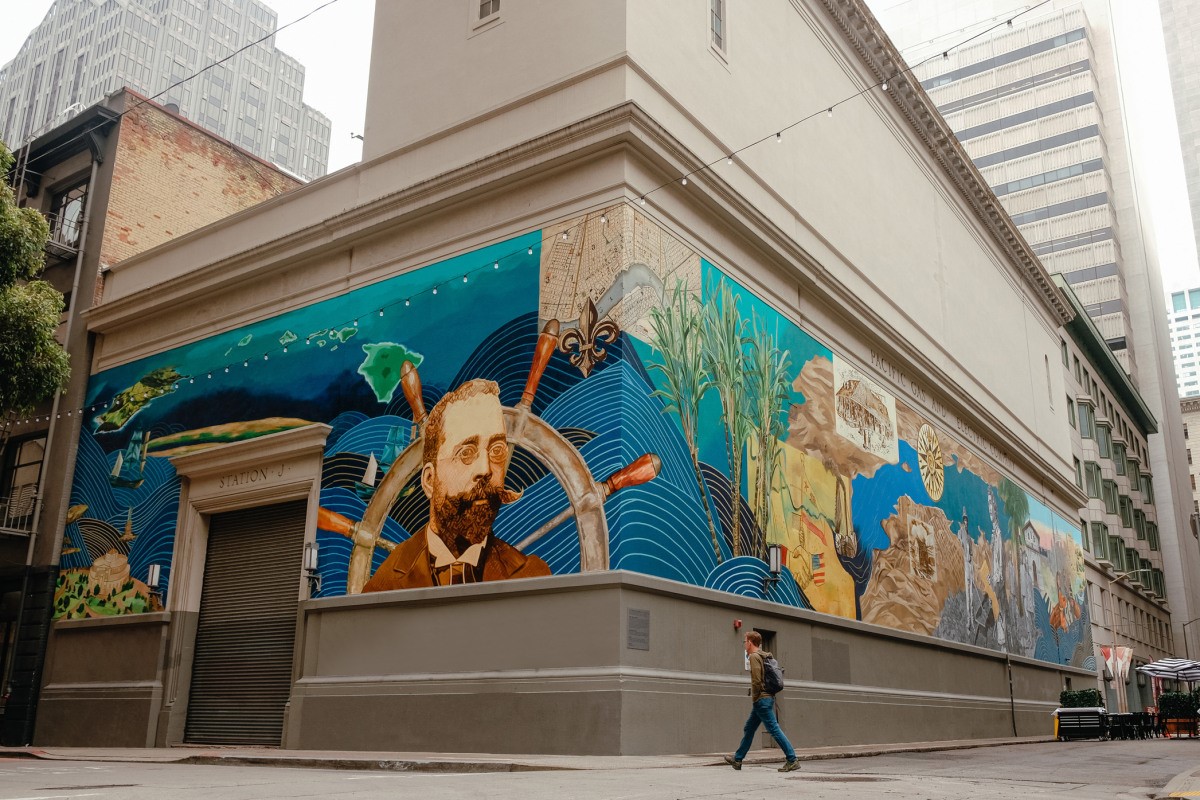
Property owners have, therefore, become more risk-averse and cost-conscious of change. Cities had been much more experimental during the pandemic, reclaiming streetscapes and public space via safe streets, outdoor dining, and other programs, says Rodriguez. But turning temporary programs and streets secured with plastic bollards into something permanent means more programming, funding, and collaborative design; there’s also a significant push to “return to normal” and in some cases leave behind pandemic-era experiments. It’s important to focus on a few nexuses for pedestrianization instead of spreading the effort too thin, Rodriguez says. And despite evidence to the contrary, there’s still strong pushback around perceptions of taking away retail space or removing parking.
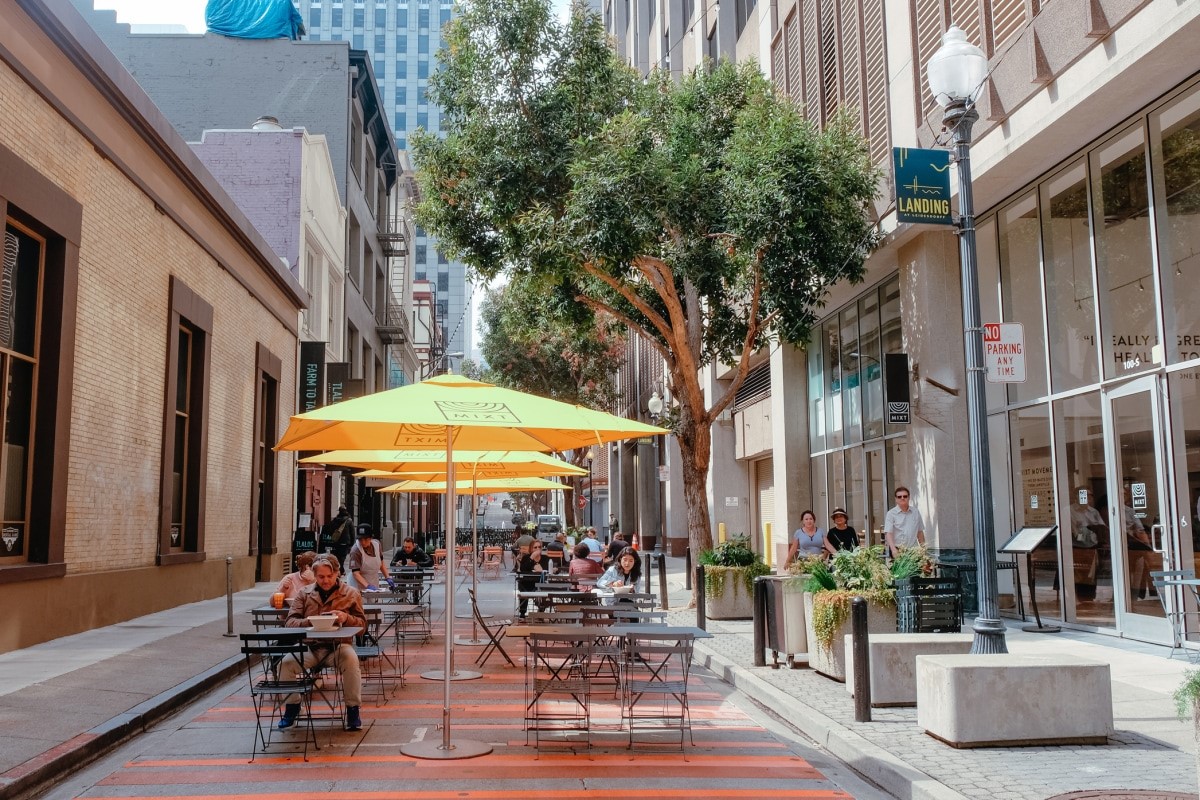
Imbault says he had to navigate numerous San Francisco city departments, dealing with permitting, as well as concerns about emergency vehicles accessing the alley. One local office owner complained that the mural would ruin the views from his building and drive down rent.
“I was surprised at the level at which people didn’t want anything that would bring noise to the street, any added color or any added sense of vibrancy, because it was an unknown,” he says. “It’s still an unknown in San Francisco.”
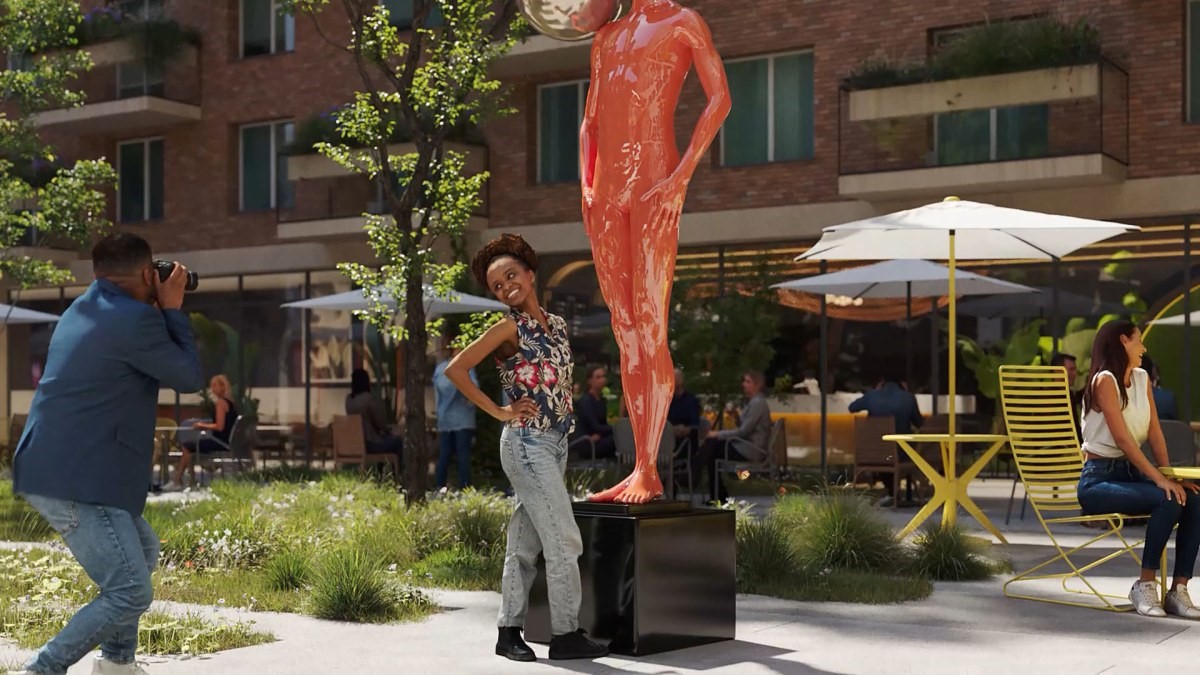
Chen sees the DC Greenway plan not just as a public collaboration, but as a link of different interest groups and a “win-win-win”: the private sector gets a way to revitalize older office buildings hard to convert into residential housing, the community gets a more vital public realm, and the city gets better tax revenue.
Loh believes that’s the right language and vision. She’s most impressed by the Greenways plan because of the way it’s framed, re-envisioning public right-of-ways as a way to benefit all, not a shift that tends to lead to winners and losers.
To continue with the cellular example, downtowns became a monoculture of offices. Cities have traditionally over-indexed on offices because it was a way to make money on property taxes without having to provide the public services, like schooling, that residential neighborhoods demand. Offices became an economic-development shortcut that the pandemic has fully exposed. It’ll take exceptional effort and investment to restore a more diverse ecosystem, and these projects are just the beginning of that process.
(32)

